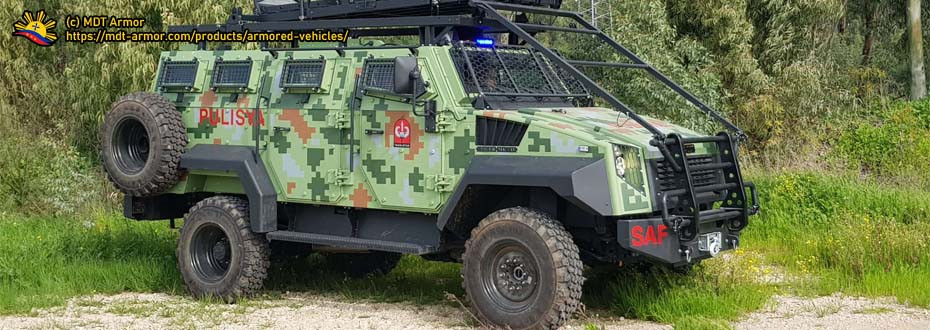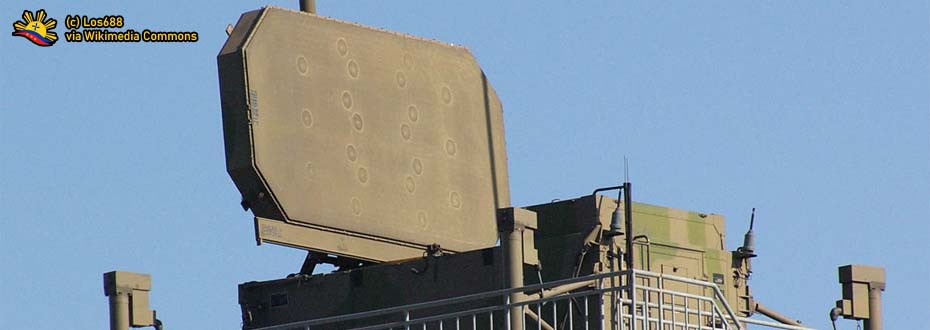Some defense outlets have made rounds in reporting that three countries in Asia are interested in having an air defense system that has produced by a country like India, whose aspiration for defense arms exports is now getting set into motion. The Philippines, apparently, is one of those three countries said to be interested in obtaining this system.
IN THE NEWS
 |
| Akash Air Defense Missile System of the Indian Armed Forces. Image Source. |
Three countries - Vietnam, United Arab Emirates, and the Philippines, have expressed their interest in procuring Akash Air Defense Missile System for their respective nation's air defense needs, as India ramps up its defense export needs after the success of its export sale to the Philippines for its BrahMos Anti-Ship Missile System.
This came after the Indian government recently approved the export of these indigenously made air defense systems, with it most likely to be an export variant intended for other countries that has expressed the interest in procuring them, as opposed to the ones currently in service within the Indian Armed Forces.
This shows India's aspirations in entering the Defense Export Market, competing with established industries originating from the United States, Russia, France, Italy, the United Kingdom, China, and others, wherein getting a significant portion will help boost their reputation as an arms exporter, while providing an industry that will help grow the domestic Indian economy in the long run.
In this article, we will purely discuss the development and background of the making of the Akash Air Defense Missile System, as well as providing its specifications and providing comparisons to the RAFAEL SPYDER Ground-Based Air Defense System that the Philippine Air Force will have in its inventory, and also an idea fully related to logistical and commonality of military defense platforms across the Armed Forces of the Philippines ecosystem.
INDIA'S DEFENCE RESEARCH AND DEVELOPMENT ORGANISATION
India's Defence Research and Development Organisation or known as the DRDO, is an entity that specializes in what its name describes for - research and development of Indian defense and military technology that can add or improve the country's effort to have its indigenous defense industry, focusing to the production of its own military assets and technological innovation similar to the United States' DARPA or Defense Advanced Research Projects Agency.
Some of its known indigenously made products that have researched and developed as part of improving India's military capabilities include the well-known BrahMos Cruise Missile System, in which it was a fruit of a joint development between the DRDO and the Russian Defense Company NPO Mashinostroyeniya, with the BrahMos design clearly derives from the P-800 Oniks/Yakhont Missile system that produced from Russia. The BrahMos Missile System is the first export of an Indian-made defense product to a foreign country, with the Philippines as its first export customer of the missile system.
Aside from the BrahMos Missile System, DRDO also took part in researching and developing other indigenously made defense technology and military assets, as part of its efforts by the Indian Government in pursuing a reliable defense industry. The effort comes as a part of the greater "Make In India" initiative in improving its industry as a hub for producing different goods and products for their economic development, defense industry included. These include the LCA (Light Combat Aircraft) Tejas that are intended for both the Indian Air Force and Navy and helped provided key avionics for the Indian Air Force Su-30MKI.
Also, they assist companies like the Hindustan Aerospace Limited in the development of their programs like the HAL Dhruv Advanced Light Helicopter, in which this was currently being pushed for the Philippine Coast Guard as part of their offer, coming alongside with the Dornier Do-228 aircraft that is also included in the offer, as these are to be provided through a loan or what they say as a "line of credit" from India.
As many of the indigenous defense products that the Defence Research and Development Organisation has made to improve India's Defense Industry and in enhancing the capability of India's Armed Forces, it is at no doubt that India is now going outward to push defense equipment that are Made in India, now pitching their Akash Air Defense Missile System after the successful export of the BrahMos Missiles to a country like the Philippines.
DEVELOPMENT
The Akash Air Defense Missile System has inducted and entered the active Indian Military Service way back in 2007, at the time where multiple tests of the air defense system have made and showed its performance in the process in terms of accuracy, consistency, and reliability as these are the basis for both the Indian Air Force and Indian Army before officially getting the indigenously made system as part of their firepower capability.
While the induction has done in 2007, the indigenous development of what will be the Akash Air Defense Missile System has made two decades prior. Way back in the 1980s, India began indigenous development of a medium range air defense missile system that has sought as a replacement to the Soviet-era made SA-6 Gainful (2k12 Kub) air defense system, in which the Akash have apparently derived from this system that India primarily used during that time.
Given the resemblance between the Akash and the SA-6 Gainful, let us discuss the background of the latter, of which this was a 1960-era Soviet technology that was introduced into the Armed Forces of the Soviet Union in 1967 and has showcased in a Moscow military parade of the same year. This air defense system was both effectively used by Egypt and Syria in the 1973 Yom Kippur War against Israel, especially in the early days of the war.
As for the test flights, it took India at least a decade until the first ones have started in the 1990s, with enhancements and tweaks have ensured as part of the ongoing development of the indigenous air defense system primarily intended for the Indian Armed Forces, wherein it took them a decade and a half more before the first production and induction phase at around 2005/2007.
Currently, India's Defence Research and Development Organisation, along with the Indian Armed Forces, is still developing the Akash air defense missile system that multiple variants have produced since its induction in the mid-2000s and since then became part of the Indian Armed Forces' air defense system umbrella, now intending to export it to other countries like the Philippines.
SPECIFICATIONS
 |
Akash Missile System's features and Physical Parameters.
Image Source. |
Like any other air defense system configurations available such as Israel's SPYDER Ground-Based Air Defense System, the AKASH Air Defense Missile System setup comes with several batteries, each coming with its own quantity of Akash Missile Launchers and radar units, although it also comes with a Group headquarters that serves as a primary Command and Control Unit that oversees operation of each AKASH Air Defense Missile batteries deployed.
The Physical parameters provided on the screen grabbed part of the document above (accessible here), pertains to the AKASH Missile munition itself, wherein it has a diameter of 35 centimeters (converted) and a length of 582 centimeters (also converted). This means that the size of the AKASH Missile itself is larger than the Python Missile, with its 16 centimeter diameter and 310 centimeter length, while having a lighter weight coming at 105 kilograms compared to AKASH's 720 kilograms.
Likewise, the AKASH Missile munition itself, as compared to the "I-Derby Missile", still comes heavier as the latter comes with 118 kilograms, while keeping the same diameter size with the Python Missile at 16 centimeters and having a lengthy size at around 362 centimeters, although it is still smaller than the overall size that came with the AKASH Missile System munitions as its design has derived from Soviet-era technology compared to the modern technological design that goes with both Python and Derby Missiles (munitions that form the RAFAEL SPYDER Ground-Based Missile System).
As for the range, the AKASH Missile's integral Ram Rocket Propulsion has said to provide a thrusting range up to 25 kilometers, far less than the RAFAEL SPYDER MR (Medium Range) Ground-Based Air Defense System that has the approximate coverage of at least 40-60 kilometers. AKASH Air Defense Missile System's capabilities can be more comparable to the RAFAEL SPYDER SR (Short Range) variant that has the range of 20 kilometers, with the former having a slight advantage of only just 5 kilometers.
That being said, capability-wise, the RAFAEL SPYDER MR Ground-Based Air Defense System that the Philippine Air Force will get is far more capable than India's AKASH Air Defense Missile System that it offers to the Philippine Navy, wherein it will make more sense if the naval branch will just settle on the same air defense system made in Israel as this also comes with a practical approach in terms of logistics and interoperability.
WHAT REMAINS TO BE SEEN
Speaking of SPYDER Ground-Based Air Defense System of Israel, it has successfully chosen by the Philippine Air Force for its Ground-Based Air Defense System Acquisition Project, giving RAFAEL access to the Philippine military and defense market, gaining a portion in the market in the process while providing their product that effectively improves the country's air defense system, giving a significant air cover in the national airspace.
The Shore-Based Air Defense System Acquisition Project of the Philippine Navy comes with the same aim as the Ground-Based Air Defense Acquisition Project of the Philippine Air Force, with the difference being the end-user of each project and if the Akash Air Defense Missile System became the preferable option, the defense system of choice that each of the military branches uses for their air defense capabilities and getting an effective air cover for the portion of the country's airspace.
However, the Armed Forces of the Philippines, like any other organization, are fond of having commonality between military assets, especially in employing systems in the field that benefit them regarding improvement of the logistics chain of spare parts and maintenance of each system, not to mention that the offer made by the Israeli firm RAFAEL counts as more modern, capable, and more sophisticated, than the India's AKASH Air Defense Missile System with its design derived from Cold War Soviet Tech.
It remains to be seen as to the outcome of this deal as India approved this deal for export and an offer for the Philippine Navy's Shore-Based Air Defense Acquisition Project, not to mention that India sees first successful export of its BrahMos Anti-ship missiles to the Philippine Navy, while it sees stiff competition with its competitors especially Israel's air defense system that is already being used by the people in the Philippine Air Force.
























